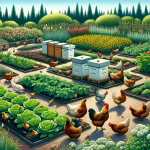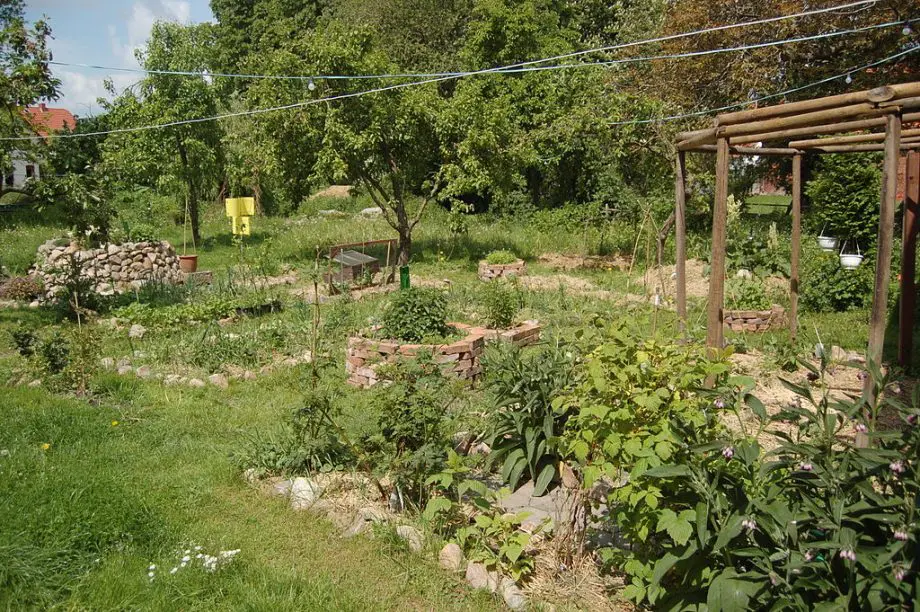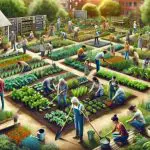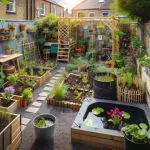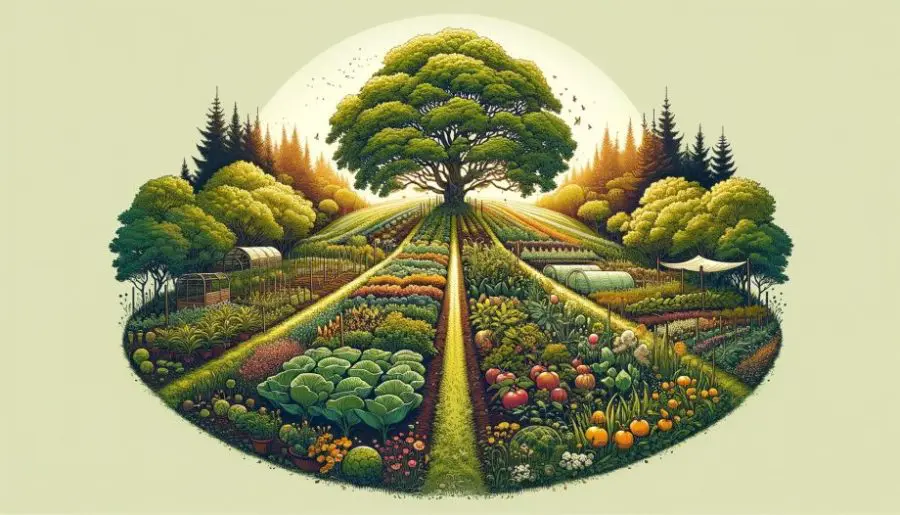
Dive into permaculture vs regenerative agriculture to uncover the secrets of sustainable farming. Learn how each enriches our planet in unique ways.
Permaculture vs Regenerative Agriculture Key Takeaways:
- Permaculture is a holistic design philosophy for sustainable living, focusing on ecological systems.
- Regenerative agriculture, meanwhile, specifically aims to rejuvenate soil health and biodiversity through farming practices.
- Both contribute uniquely to sustainable ecosystems.
Are you curious about the difference between permaculture vs regenerative agriculture? You’re in the right place!
Join us as we embark on a fascinating journey to unravel these two green giants of sustainable farming.
We’ll explore their principles, benefits, and how they’re revolutionizing our relationship with the Earth.
Permaculture vs Regenerative Agriculture
In the quest for sustainable farming, two prominent practices have emerged as frontrunners: permaculture and regenerative agriculture.
While both aim to harmonize agriculture with nature, they follow distinct paths in achieving this goal.
This article delves into these methodologies, unveiling their intricacies and impacts.
We will explore not just their definitions and principles, but also how they compare and contrast with each other and with traditional organic farming and regenerative agriculture methods.
Understanding Permaculture
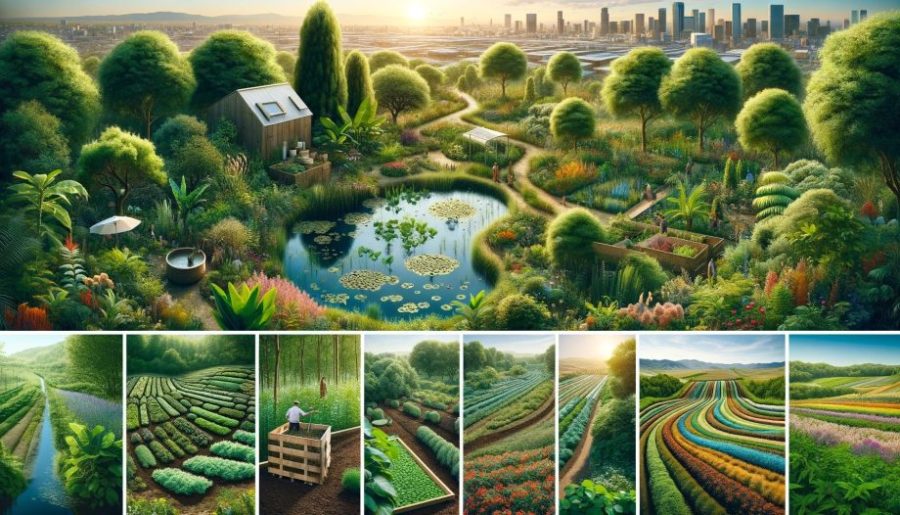
Permaculture, a term coined in the 1970s, intertwines the concepts of permanence, agriculture, and culture.
It’s a design system crafted to create self-sustaining ecosystems that emulate natural environments.
Rooted in ethics like care for the earth and people, permaculture’s approach is holistic, encompassing not just food production but a balanced lifestyle.
Key principles include:
- Observing and interacting with nature.
- Catching and storing energy.
- Ensuring diversity and applying self-regulation.
Permaculture is an approach to land management and settlement design that adopts arrangements observed in flourishing natural ecosystems. It includes a set of design principles derived using whole-systems thinking. It applies these principles in fields such as regenerative agriculture, town planning, rewilding, and community resilience. The term was coined in 1978 by Bill Mollison and David Holmgren, who formulated the concept in opposition to modern industrialized methods, instead adopting a more traditional or “natural” approach to agriculture. From Wikipedia
But permaculture isn’t without challenges. It requires significant knowledge and initial investment and can be labor-intensive.
Yet, the payoffs are substantial, with benefits like sustainable ecosystems, reduced waste, and enhanced biodiversity.
Understanding Regenerative Agriculture

What is regenerative agriculture?
Regenerative agriculture, on the other hand, is a holistic farming approach focusing on soil regeneration, biodiversity restoration, and ecosystem health improvement.
It’s grounded in agroecology, applying ecological principles to agricultural systems.
Key practices include crop rotation, cover cropping, and reduced tillage, all aiming to rebuild soil health and fertility.
Regenerative agriculture’s benefits are manifold, offering soil restoration, climate change mitigation, and sustainable farming.
Yet, transitioning from conventional to regenerative agriculture can be challenging, demanding changes in mindset and practices.
Regenerative agriculture is a conservation and rehabilitation approach to food and farming systems. It focuses on topsoil regeneration, increasing biodiversity,[1] improving the water cycle,[2] enhancing ecosystem services, supporting biosequestration,[3] increasing resilience to climate change, and strengthening the health and vitality of farm soil. From Wikipedia
Permaculture vs Regenerative Agriculture: A Comparative Study
In our quest for sustainable farming, understanding the nuances between permaculture and regenerative agriculture becomes crucial.
This comparative study delves into these two leading agricultural practices, uncovering how they align and diverge in their approaches to sustainable farming.
We explore the broader, holistic nature of permaculture, with its focus on closed energy cycles and lifestyle integration, against the targeted approach of regenerative agriculture, emphasizing soil health and ecosystem restoration.
This analysis not only distinguishes them from traditional organic farming but also highlights how each uniquely contributes to enhancing ecosystem health.
• Shared Goals, Divergent Approaches While permaculture and regenerative agriculture share common goals, their approaches and focus areas differ.
• The Broad Scope of Permaculture Permaculture is broader, integrating lifestyle aspects and focusing on creating a closed energy cycle.
• Focus on Soil Health in Regenerative Agriculture Regenerative agriculture, however, zeroes in on soil health and ecosystem restoration, often through practices like cover cropping and biodiversity enhancement.
• Beyond Organic Farming: Enhancing Ecosystem Health In comparison with permaculture organic farming and regenerative go beyond avoiding synthetic chemicals.
They proactively enhance ecosystem health but with different focal points: permaculture in holistic design and regenerative agriculture in soil and biodiversity.
Application of Permaculture and Regenerative Agriculture in Various Settings

Exploring the versatility of permaculture and regenerative agriculture reveals their transformative impact across various settings.
This section highlights how these sustainable practices extend beyond traditional rural farmlands, finding relevance and adaptability in urban landscapes, backyard gardens, and even small community spaces.
We’ll examine the wide-ranging applications of permaculture principles and the growing recognition of regenerative agriculture’s flexibility across different climatic conditions and soil types.
This exploration underlines the potential of both systems to offer innovative solutions to modern agricultural challenges, reshaping our approach to food production and ecosystem sustainability.
• Permaculture’s Wide-Ranging Adaptability Permaculture’s adaptability is one of its strongest assets. It’s applicable not only in rural farmlands but also in urban landscapes.
• Urban Applications of Permaculture From backyard gardens to vertical farming in city spaces, permaculture principles find their way into various settings, proving that sustainable living is achievable regardless of location.
• Contributions to Local Ecosystems This adaptability contributes to local food production, community development, and biodiversity enhancement, even in urban environments.
• Regenerative Agriculture: Beyond Rural Boundaries On the other side, regenerative agriculture, while traditionally linked with rural farming, is increasingly being recognized for its versatility.
• Adapting to Diverse Environments Its principles can be adapted to different climatic conditions and soil types, making it a viable option for a diverse range of geographical settings.
• Community Gardens: A Model for Urban Regenerative Practices Small-scale implementations, like community gardens, are showcasing how regenerative practices can be incorporated even in smaller, more controlled environments.
• Potential for Global Agricultural Revolution The broad applicability of both systems highlights their potential to revolutionize our approach to agriculture and food production, offering viable solutions to the challenges posed by conventional farming methods.
Challenges and Solutions in Implementing Permaculture and Regenerative Agriculture
Adopting permaculture and regenerative agriculture practices holds great promise for a sustainable future, but it’s not without its challenges.
This section delves into the practical difficulties encountered when implementing these methods.
From the significant initial investment in permaculture to the paradigm shift required in regenerative agriculture, we explore the hurdles and how they can be overcome.
The focus is on the necessity of education, community involvement, and expert guidance in navigating these challenges, ensuring a successful transition to more sustainable farming practices.
• Challenges in Implementing Permaculture Despite their benefits, implementing permaculture and regenerative agriculture comes with its set of challenges.
• The Initial Investment and Expertise Required for Permaculture For permaculture, the initial investment, both in terms of time and resources, can be substantial.
• Overcoming Permaculture Challenges with Education and Community Support Its labor-intensive nature and the need for detailed knowledge and skills in ecosystem design and management can be daunting for beginners.
• Transitioning Challenges in Regenerative Agriculture Regenerative agriculture faces its own set of hurdles. Transitioning from conventional to regenerative practices requires a paradigm shift in farming techniques and a deep understanding of soil health.
• Support Systems for Regenerative Agriculture Farmers may need guidance in adopting practices like crop rotation, cover cropping, and integrating livestock.
• Balancing Challenges with Long-term Benefits In both cases, the challenges are outweighed by the long-term benefits these practices offer in terms of environmental sustainability and ecological balance.
Future Trends in Permaculture and Regenerative Agriculture

As we look forward, permaculture and regenerative agriculture are not just farming practices but beacons of hope for a sustainable future.
Let’s expand on the key trends shaping their evolution:
Embracing Technological Advances
- Innovations in Sustainable Farming Techniques: Development of new tools and methods that enhance the efficiency and effectiveness of permaculture and regenerative agriculture.
- Integration of Technology: Utilization of AI, sensors, and other tech tools to optimize water usage, monitor soil health, and enhance crop diversity.
Global Adoption and Policy Support
- Increasing Global Recognition: More countries are recognizing the benefits of these practices and are incorporating them into their agricultural policies.
- Government and International Support: Implementation of policies and subsidies to encourage farmers to adopt sustainable practices.
Education and Community Involvement
- Expanding Educational Initiatives: Introduction of courses and programs at educational institutions to teach sustainable farming principles.
- Growing Community Engagement: Increased participation in local permaculture and regenerative agriculture projects, fostering a sense of community and shared responsibility for the environment.
Economic Opportunities and Market Growth
- Emerging Markets for Sustainable Products: Rise in consumer demand for sustainably produced food, leading to new market opportunities.
- Economic Incentives: Financial benefits for farmers adopting sustainable practices, including increased yields and reduced input costs.
Addressing Climate Change and Food Security
- Role in Mitigating Climate Change: Contribution of these practices to carbon sequestration and reduction of greenhouse gas emissions.
- Contributions to Global Food Security: Enhancing the resilience of food systems against climate change and other environmental challenges.
These trends paint a hopeful picture of a world where sustainable farming practices are not just niche but integral to our agricultural systems.
FAQ: Permaculture and Regenerative Agriculture
Navigating the world of sustainable agriculture can often lead to questions about the nuanced differences and applications of permaculture and regenerative agriculture.
In this FAQ section, we aim to clarify these concepts, shedding light on their unique characteristics, benefits, and how they complement each other in the pursuit of ecological harmony.
Whether you’re a seasoned farmer, a gardening enthusiast, or just someone curious about sustainable practices, these answers will provide deeper insights into the transformative potential of permaculture and regenerative agriculture.
Let’s dive into some of the most commonly asked questions to demystify these vital practices.
Q: What distinguishes permaculture from regenerative agriculture?
A: Permaculture is a holistic approach that integrates agriculture with sustainable living, focusing on designing systems that mimic natural ecosystems.
Regenerative agriculture, however, specifically targets soil restoration and biodiversity enhancement to rejuvenate degraded land and combat climate change.
Q: How does permaculture contribute to soil health in regenerative agriculture?
A: In permaculture, practices like composting, crop rotation, and the use of natural fertilizers improve soil structure and fertility.
These practices also align with regenerative agriculture’s goal of enhancing soil health and contributing to a more vibrant and resilient ecosystem.
Q: Can regenerative agriculture principles be applied in urban settings?
A: Absolutely. Regenerative agriculture can be adapted for urban environments through urban gardens, rooftop farming, and community composting initiatives.
These practices bring the principles of soil health and biodiversity to the heart of cities, promoting local food production and sustainable urban living.
Q: What are the economic impacts of adopting regenerative agriculture?
A: Adopting regenerative agriculture can lead to long-term economic benefits.
Farmers may see improved crop yields and reduced need for costly chemical inputs.
Moreover, healthier soils can lead to better quality produce, potentially commanding higher market prices.
On a larger scale, these practices contribute to sustainable food systems, which are crucial for economic stability and growth.
Q: Is permaculture feasible for large-scale commercial farming?
A: While traditionally associated with smaller-scale operations, permaculture’s principles are scalable.
Large-scale commercial farms can adopt practices like diversified cropping, efficient water use, and integration of renewable energy sources.
The key lies in adapting the principles to suit the scale and context of the operation.
Conclusion: Embracing a Sustainable Future through Permaculture and Regenerative Agriculture
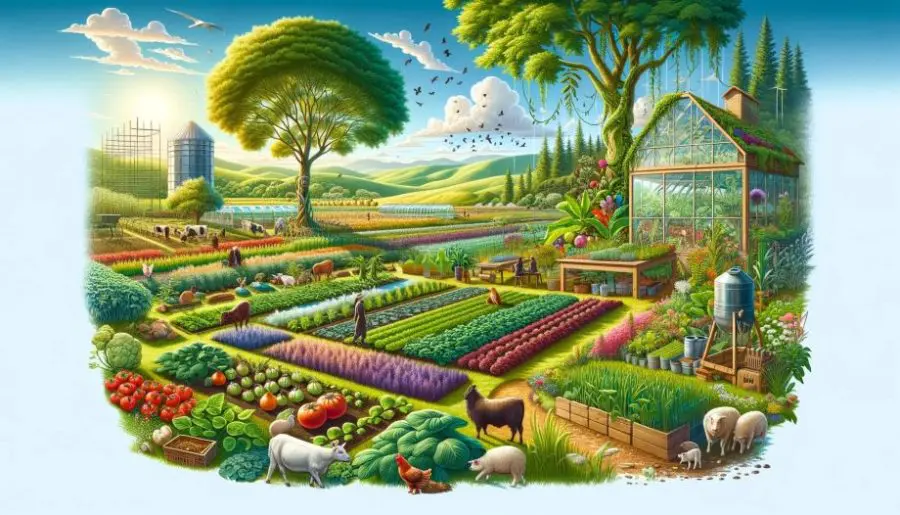
As we conclude our exploration of permaculture and regenerative agriculture, it’s clear that these practices are more than just farming techniques; they’re pathways to a sustainable future.
By understanding their principles, applications, and potential impact, we can appreciate their significance in addressing today’s environmental challenges.
Let’s encapsulate the key takeaways and envision how these practices can shape a greener, more resilient world.
Key Takeaways and Global Impact
- Sustainability and Resilience: Both permaculture and regenerative agriculture offer blueprints for sustainable and resilient farming, emphasizing ecological balance and resource conservation.
- Soil Health and Biodiversity: These practices are pivotal in improving soil health and promoting biodiversity, essential components for robust ecosystems.
- Climate Change Mitigation: Their roles in carbon sequestration and reducing greenhouse emissions position them as crucial players in the fight against climate change.
- Economic and Social Benefits: Beyond environmental impacts, they offer economic benefits to farmers and communities, fostering local economies and food security.
Embracing Change and Overcoming Challenges
- Adapting to New Practices: The transition to these sustainable methods requires a shift in mindset and farming practices, which can be achieved through education and community support.
- Overcoming Initial Barriers: While initial investments and changes can be challenging, long-term benefits like improved crop yields and soil health make these practices worthwhile.
Envisioning a Greener Future
- Global Adoption and Innovation: The future lies in wider adoption and continual innovation in sustainable farming practices.
- Community and Policy Involvement: Increased community involvement and supportive policies are key to mainstreaming these practices.
- Education and Awareness: Ongoing education and awareness are essential to cultivating a new generation of farmers and consumers who prioritize sustainability.
In summary, permaculture and regenerative agriculture are not just alternatives to conventional farming; they are essential components of a sustainable future.
By embracing these practices, we can create a world where agriculture works in harmony with nature, supporting not just our current needs but also those of future generations.

